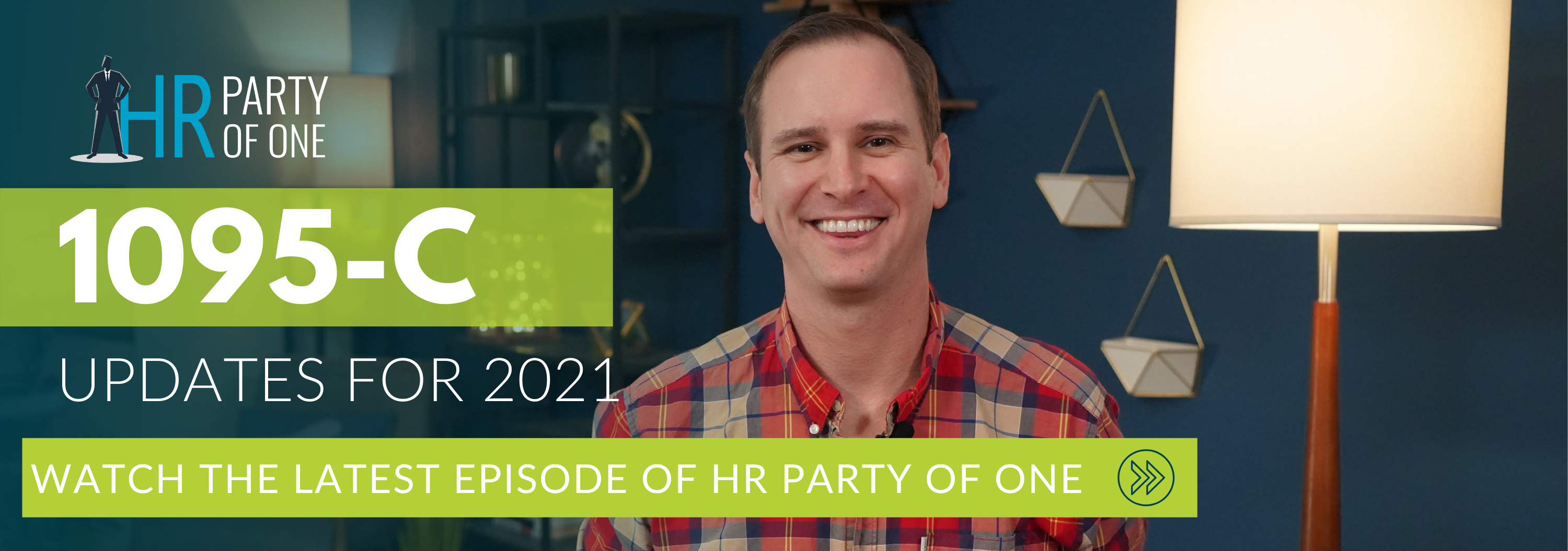
Written by
Drew Gieseke
Drew Gieseke is an aPHR®-certified marketing professional who writes about HR, compliance, and healthcare solutions.
How ACA Affordability Thresholds Impact Employer Health Plans
.jpg)
Each year, the IRS issues a new affordability threshold that ACA-compliant organizations must meet for employee health plans. Find out how this maximum rate works and what employers need to know to remain compliant when administering healthcare benefits.
What is an Affordability Threshold for Employer Health Plans?
Under the Affordable Care Act (ACA), organizations that are considered applicable large employers (ALE) are required to adhere to certain affordability requirements when administering health plan benefits to employees. As a refresher, an ALE is an organization that employs at least 50 full-time employees, including full-time equivalent (FTE) employees, on average during the prior calendar year.
One of the ACA’s regulations stipulates that the lowest-cost, employee-only health plan coverage option offered by an ALE—also known as minimum essential coverage (MEC)—doesn’t exceed a certain percentage of an employee’s household income. This rate is known as the affordability threshold and is typically adjusted every year to account for changes in market conditions, healthcare premium growth, and the American economy.
What Fines Are Associated with Affordability Threshold Noncompliance?
An ALE will owe the first type of employer shared responsibility payment—or, in other words, penalty—if it doesn’t provide MEC to at least 95% of its full-time staff, and at least one full-time employee qualifies for the premium tax credit (PTC) to purchase coverage through the government marketplace.
On the other hand, even if an ALE offers MEC to at least 95% of its staff, it could owe the second type of employer shared responsibility payment for every full-time employee who receives the PTC for purchasing coverage through the government marketplace.
The IRS clarifies three instances in which employees may qualify for the PTC:
- The employer-provided MEC isn’t affordable, as determined by Form W-2 wages, an employee’s rate of pay, or the federal poverty line
- The employer-provided MEC doesn’t provide minimum value, meaning that it doesn’t cover at least 60% of total allowed cost of benefits that can be expected to be incurred under the plan
- The employee is part of the 5% of a full-time workforce that isn’t offered MEC
What is an Affordability Safe Harbor and How Does it Impact MEC?
The IRS points out that employers likely don’t know the household income of their employees, which can complicate whether or not an ALE offers at least one health plan that meets MEC for its employees. As a result, the IRS says that there are three “safe harbors” that can be used to determine the affordability of the employer shared responsibility provisions.
These safe harbors include:
- Form W-2 wages
- An employee’s rate of pay
- The federal poverty line (FPL)
In 2021, the FPL was set at $12,760 for a one-person household. This means that for organizations that use the FPL safe harbor to determine affordability, employee premiums can’t exceed $104.53 per month (9.83% of the FPL).
2021 Affordability Threshold for Employer-Sponsored Health Plans
The affordability threshold for employer-sponsored health plans in 2021 is 9.83%, which is a small increase from the rate of 9.78% in 2020.
How Do Affordability Threshold Rate Changes Impact Employers?
Each year, organizations need to make adjustments to their health plans to account for adjustments to affordability thresholds. These can include:
- Tweaking Health Plans Offered: In addition to a more expensive health plan, ALEs can offer different, more affordable health coverage that meets the affordability requirements determined by the IRS.
- Increasing or Decreasing Employee Cost-Sharing: ALEs can also change how much they contribute to each individual employee’s coverage plan to ensure that it meets the affordability requirements.
Ultimately, this ever-changing set of requirements means that it’s more important than ever for small and mid-sized businesses to work with a trusted benefits broker. These partners can help keep organizations compliant with the ACA—and avoid costly fines for noncompliance—and provide affordable health coverage to employees, which can be an effective way to recruit and retain team members.

Written by
Drew Gieseke
Drew Gieseke is an aPHR®-certified marketing professional who writes about HR, compliance, and healthcare solutions.
Related Posts
Part-time work is becoming increasingly common in today’s workforce—especially for...
As you know, healthcare and benefits can be complicated, which can make the enrollment...
With the deadline for filing and distributing 1095-C forms approaching, staying...
A strong paid time off (PTO) policy helps retain current talent and attract prospective...







Submit a Comment